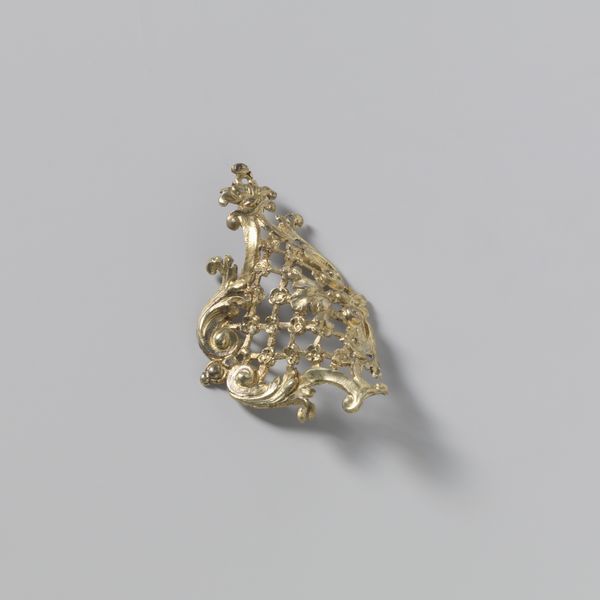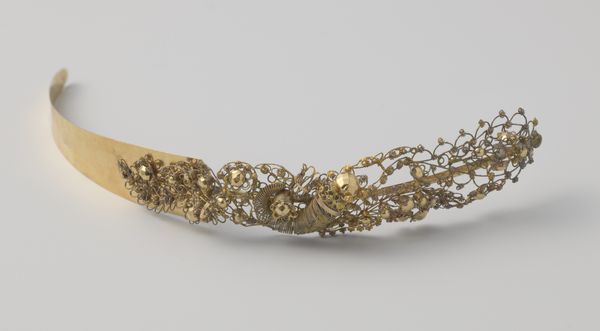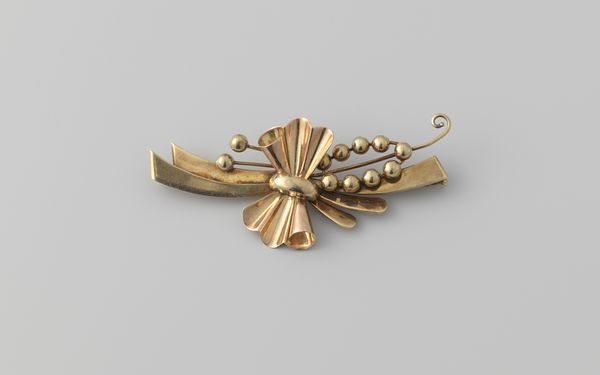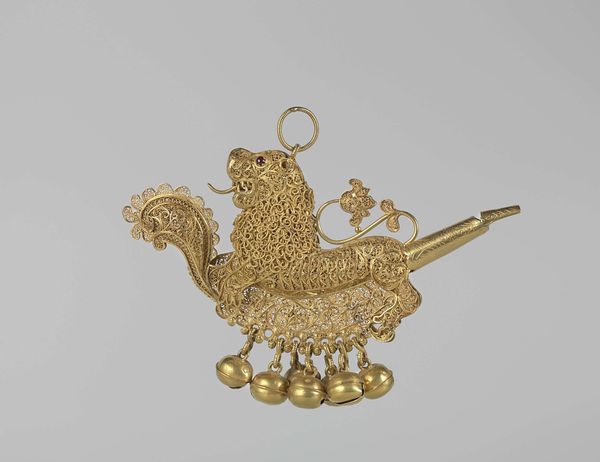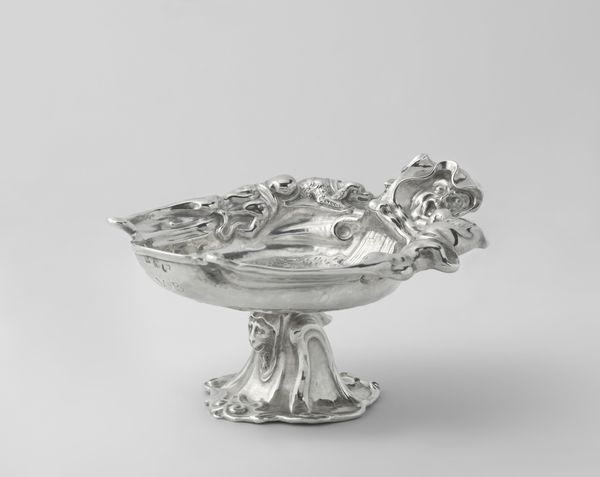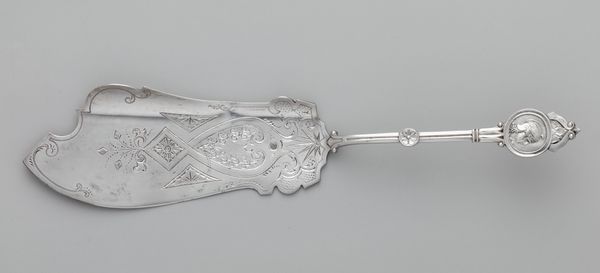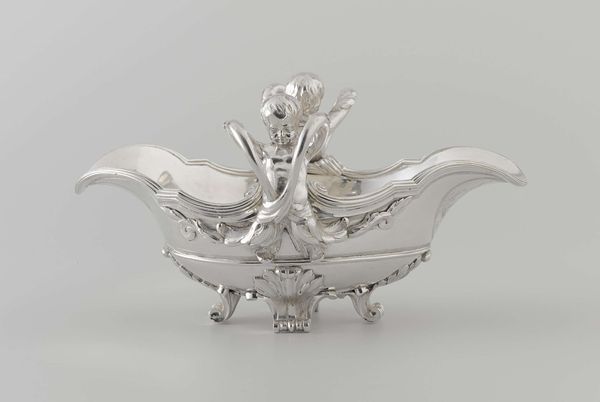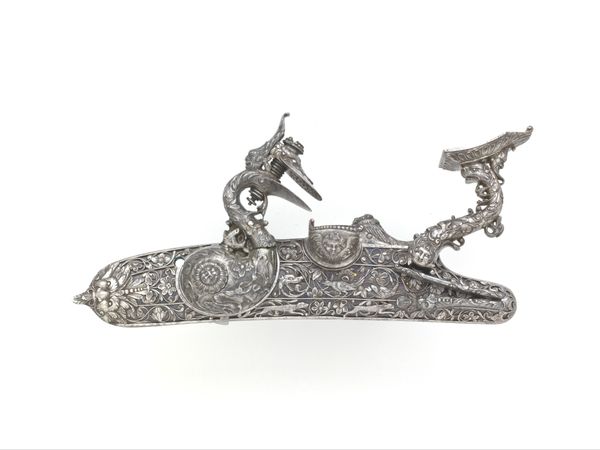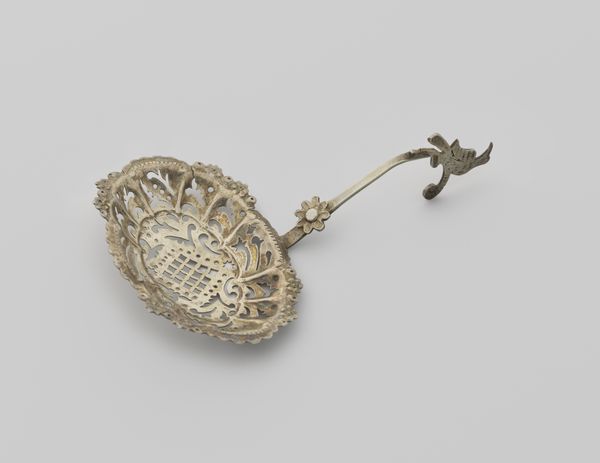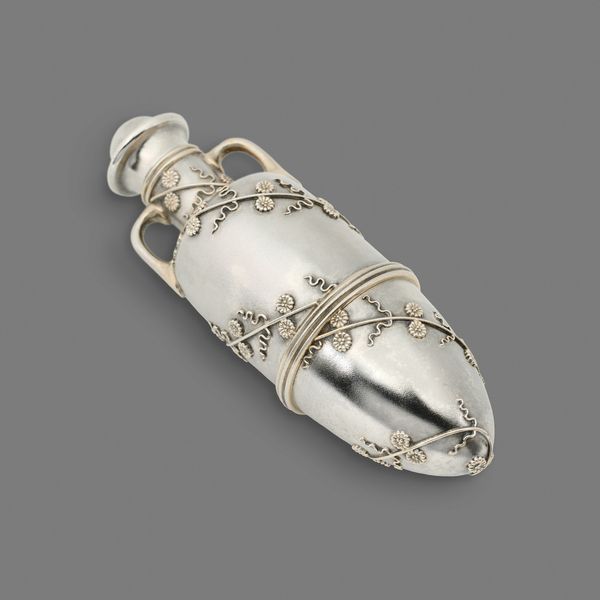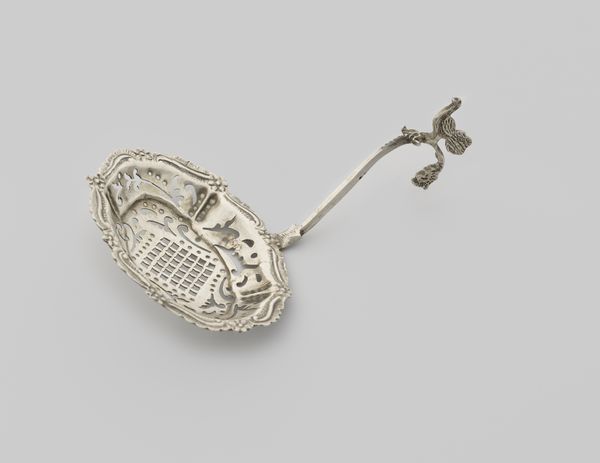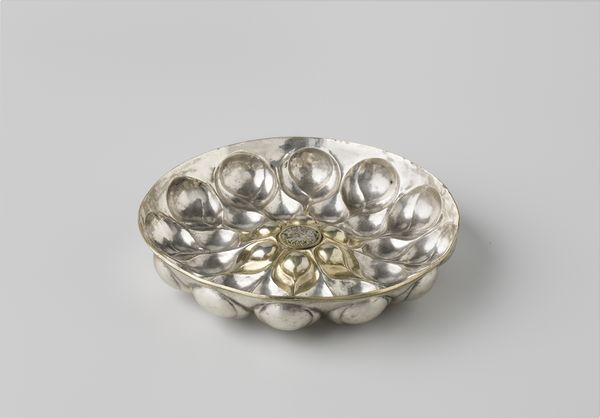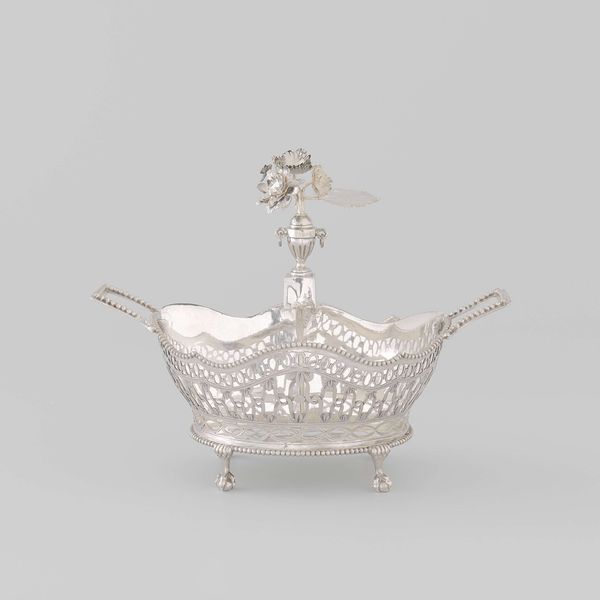
silver, metal
#
silver
#
metal
#
decorative-art
#
rococo
Dimensions: length 10 cm, width 3 cm, weight 24 gr
Copyright: Rijks Museum: Open Domain
Curator: The opulence is really striking! It just radiates a decadent, almost playful feeling. Editor: Indeed. Here we have a silver "Roomlepel, met gebogen steel met dansende amor," which translates to a ladle or spoon with a curved handle featuring dancing cherubs. It dates from 1725 to 1750. The use of silver, quite typical for Rococo decorative arts, speaks to wealth and status. Curator: Looking closely, the handle is quite ornate, and that's pure craftmanship on display. The material and method—silver painstakingly shaped—elevate it beyond simple utility. I'd love to know more about the silversmith who created it and how the workshops were structured at that time! The repetitive labor it would take is fascinating! Editor: Well, this piece aligns with the fashion of the upper class who appreciated decorative objects. Silverware became a symbol of societal refinement. It reflects a time when access to this kind of art was quite rare, often associated with power or family status. These objects frequently reinforced hierarchies. Curator: Absolutely. Even the cherubs contribute to the materialist reading. Their image, usually seen on canvas, becomes integrated with everyday life via mass-produced silver, reflecting changes in societal value that are determined by capital. Editor: Precisely! Moreover, decorative arts pieces like these became prized items that reflected one's access to not just capital, but culture. Collectors created impressive assemblages that showed prestige, therefore creating value in and of themselves. Curator: Examining it, one really has to respect the craftsmanship while reflecting on production conditions. A fascinating contradiction! Editor: It's certainly food for thought, or, in this case, for soup! Curator: Heh! Indeed, indeed.
Comments
No comments
Be the first to comment and join the conversation on the ultimate creative platform.
